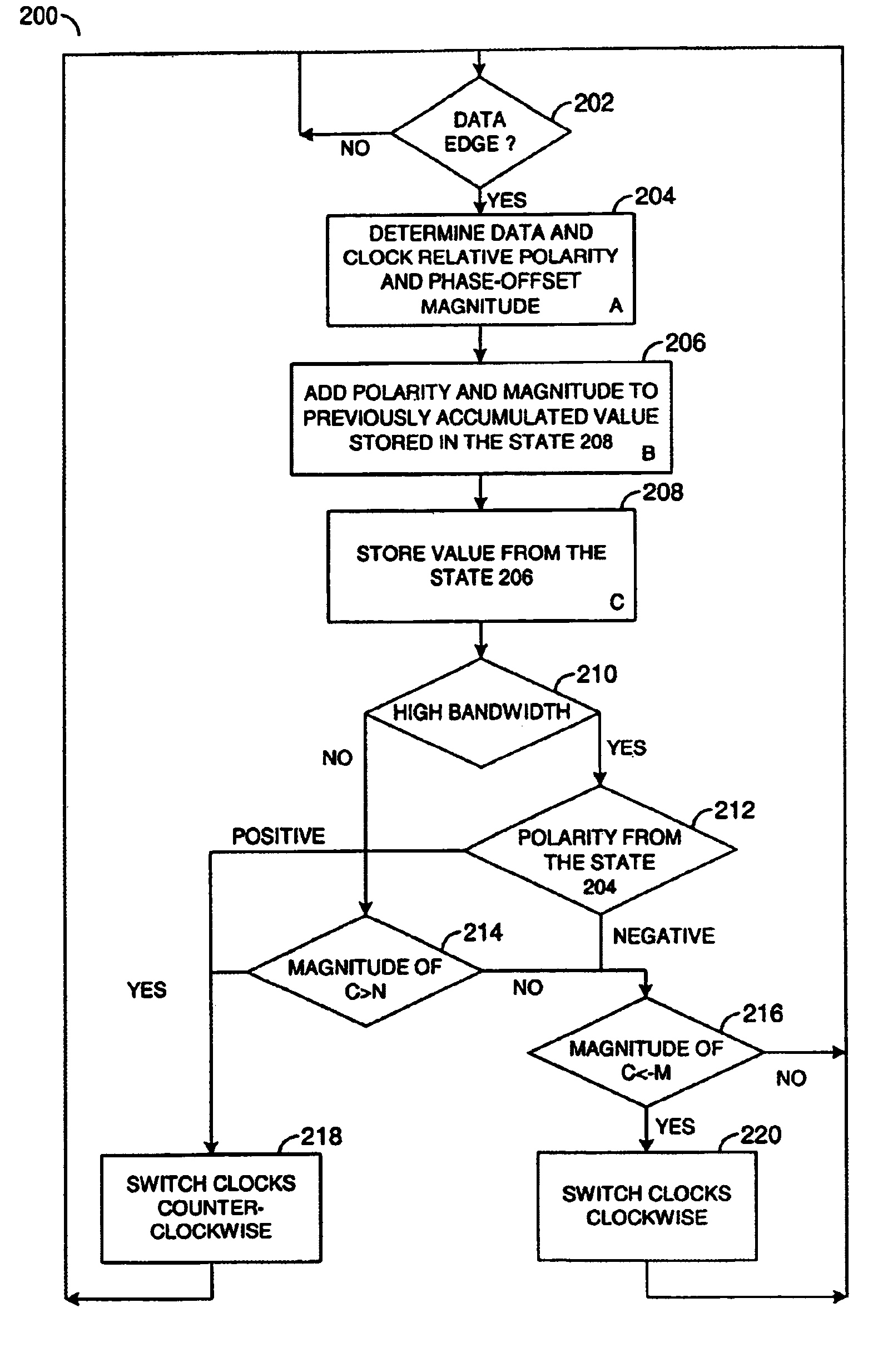Linearized digital phase-locked loop
a phase-locked loop and linear technology, applied in the field of linearized digital phase-locked loops, can solve the problems of inability to tolerate large input signal distortion, jitter in the resulting recovered clock, and the system never truly “locked” of the bang system, so as to reduce the kinds of distortion associated with the bang, reduce the duty-cycle distortion (dcd), and reduce the data-dependent jitter (ddj)
- Summary
- Abstract
- Description
- Claims
- Application Information
AI Technical Summary
Benefits of technology
Problems solved by technology
Method used
Image
Examples
Embodiment Construction
[0017]Referring to FIG. 3, a block diagram of a circuit 100 is shown in accordance with a preferred embodiment of the present invention. The circuit 100 generally comprises a logic block (or circuit) 102 and a control block (or circuit) 104. The circuit 104 may be implemented as a control circuit configured to adjust the frequency of an output clock.
[0018]The circuit 104 generally comprises a circuit 110, a circuit 112, a circuit 114 and a circuit 116. The circuit 104 may also comprise a number of memory elements 118a–118n and a number of buffers 120a–120n. The circuit 110 may be implemented as an edge detection circuit. The circuit 110 may present a signal (e.g., DATAPULSE) to the logic block 102. The signal DATAPULSE may be generated in response to a signal (e.g., DI—N) and a signal (e.g., DI—P). In one example, the circuit 110 may be configured to generate a pulse signal in response to a transition of a data signal. The circuit 112 may be implemented as a bandwidth limiting circu...
PUM
 Login to View More
Login to View More Abstract
Description
Claims
Application Information
 Login to View More
Login to View More - R&D
- Intellectual Property
- Life Sciences
- Materials
- Tech Scout
- Unparalleled Data Quality
- Higher Quality Content
- 60% Fewer Hallucinations
Browse by: Latest US Patents, China's latest patents, Technical Efficacy Thesaurus, Application Domain, Technology Topic, Popular Technical Reports.
© 2025 PatSnap. All rights reserved.Legal|Privacy policy|Modern Slavery Act Transparency Statement|Sitemap|About US| Contact US: help@patsnap.com



